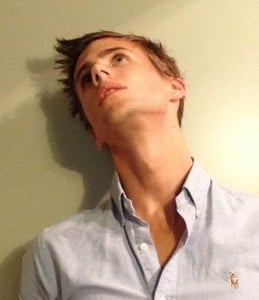Tension headache is the most widespread headache disorder, typically categorised by the following:
- Dull and persistent pain of mild to moderate intensity (not throbbing)
- Felt on both sides of the head
- A constant, tight, heavy or pressing sensation
- Tautness and tenderness of neck and shoulder muscles
Tension headaches are often stress induced and/or secondary to postural change and as a natural response, the muscles surrounding the neck and shoulders may become overactive and tight. The three muscles listed below commonly contribute to tension-type headache and stretching these may help to alleviate symptoms.
The trapezius is one of the major muscles of the neck and back and consists of upper, middle, and lower fibres. The upper fibres attach from the base of the skull into the shoulder blade.
Take your right ear directly down toward your right shoulder. Use your right hand to pull your head further. You should feel a stretch down the left side of your neck.
The levator scapulae muscle attaches from the upper neck vertebrae into the top of the shoulder blade, and as its name suggests, it is responsible for elevating the shoulder.
Look into your right armpit and use your right hand to pull your head further. You should feel a stretch at the back of your neck on the left side.
The sternocleidomastoid muscle attaches from your collar bone and sternum into the base of your skull, underneath your ear.
Turn your head to look to the right and then slowly tilt your head back. With your left hand, gently press down on your left collar bone. You should feel a stretch on the left side of your neck, underneath your ear.
The stretch position should be assumed slowly and gently and held for 30-60 seconds. As the position is held, tension from the stretch becomes strong enough to initiate a stretch reflex that results in muscle relaxation. If there is a feeling of increased pain whilst holding the stretch, you should ease off to a more comfortable position. Stretch both sides and work out whether one side feels more restricted or reproduces your headache. If so, you should focus on stretching that side.
*If the stretch aggravates your headache and/or brings on other symptoms, do not continue.
A Physiotherapy assessment is highly recommended to not only diagnose and treat the origin/s of your headache, but to also prevent it from coming back.
Book an appointment with one of our highly trained Bend + Mend Physiotherapists in Sydney’s CBD today!








